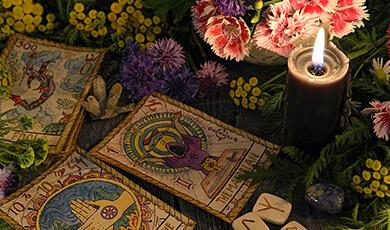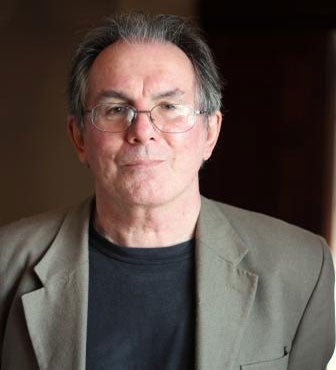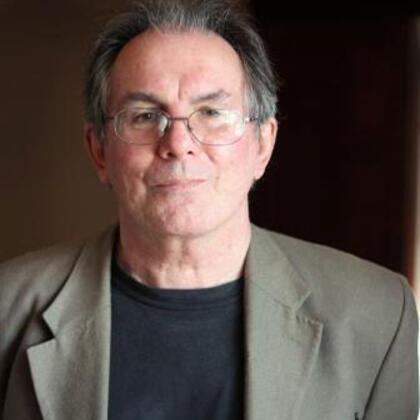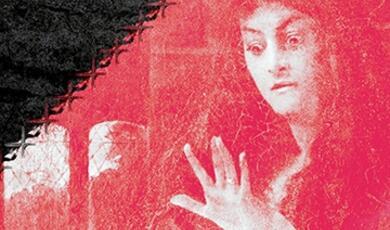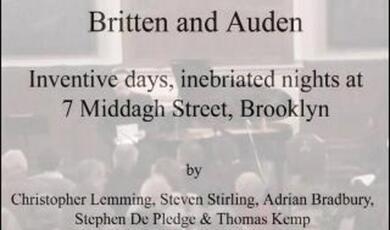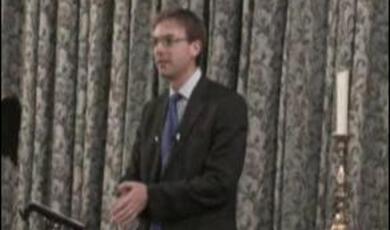Donizetti and Paris
Share
- Details
- Transcript
- Audio
- Downloads
- Extra Reading
Leaping forward about a half century in Italian operatic history, this lecture focuses on the relationship between the Italian composer Gaetano Donizetti and Paris. Influenced by the great Rossini, Donizetti produced a huge body of work, containing many operas that are still performed to this day, and also serve as the best examples of the nineteenth century’s new style of opera. This new style possessed a sound that to earlier generations would have seemed extreme, even animal, but had become uniquely exciting.
Download Transcript
DONIZETTI AND PARIS
Professor Roger Parker
My last lecture was now some months ago, and we parted in the company of Mozart in late eighteenth-century Vienna, seeing him using Italian comic opera to present to his audience what I called a 'sentimental education': a new way of understanding human relationships. This week we turn to Gaetano Donizetti, who was born in 1797 (just six years after Mozart's death) and who died in 1848, when Verdi and Wagner and the nineteenth century were in mid-career. I'm going to concentrate on Donizetti's later work in the late 1830s and early 1840s, much of which was in Paris, the so-called 'capital of the nineteenth-century', and so I'm leaping forward about a half century in Italian operatic history. What had happened to Italian opera in-between? Well, these days we live in a world of soundbites, and have rightly become suspicious of them; but I'm nevertheless going to sum up what happened during those fifty years in just two words. I wonder if any of you can guess what those two words are? Let me give you a few hints. They constitute the name of an Italian composer; he was born in Pesaro; the most famous melody in his last opera is for my generation inescapably connected to the fictional antics of a certain 'masked rider of the plains' who rode a white horse and had a trusty Indian companion called Tonto. Anyone not yet with their hand up should congratulate themselves on their innocence, their youth, or (if neither youth nor innocence is plausible) on their time not misspent watching formula TV shows in the 1950s and 1960. Yes, the masked rider was The Lone Ranger, the melody was from the William Tell overture, and so the two words we're looking for are, of course, GIOACHINO ROSSINI. After that build-up, I should at least spend a few moments talking about him.
No one was more certain than Stendhal, writing in 1824, of his passion for the operas of Rossini, who was born in 1792 and stopped composing in 1829: 'Napoleon is dead; but a new conqueror has already shown himself to the world: and from Moscow to Naples, from London to Vienna, from Paris to Calcutta, his name is constantly on every tongue.' According to Stendhal, Rossini was a revolutionary, changing the face of the Italian opera he inherited from Mozart and others. The manner in which Rossini was 'of his time' is, though, difficult to define. Stendhal's idea of him as a new Napoleon at least has some chronological force: the defeat of Napoleon, and the various edicts of the Congress of Vienna that accompanied it, coincided almost exactly with Rossini's rise to unprecedented European fame in the years around 1813-15. These political upheavals ushered in a period still commonly called the 'Restoration', one often seen as a misguided (or at least unsuccessful) attempt to quash the threat of renewed revolution by reinstating the eighteenth-century political status quo, in particular by restoring to power a small army of monarchs and other absolute rulers whose rights had been compromised or swept away by the French Revolution and its Napoleonic aftermath. In light of this large, top-down restructuring of the political map, the question often arises: was anything operatic restored in the Restoration? Was there, for example, a turning back of the operatic clock to match the counter-revolutionary edicts of the Congress of Vienna? Rossini was without doubt the operatic standard bearer of the period, and there might at first blush seem an obvious connection between operatic and political history: at the least, his notorious lack of political radicalism is mirrored both by his notorious willingness to re-use comic music in serious plots and vice versa, and by his inveterate tendency to drench every vocal line (whatever the sentiments on show) with layer upon layer of hedonistic vocal ornamentation.
Rossini was also the first essential element in the gradual formation during the nineteenth century of what we now know as the 'operatic repertory', a body of works that were revived countless times in countless different venues. A crucial change, the solidification of the repertory, took place around the second and third decades of the nineteenth century, and it began with Rossini's comic operas, whose permanent position around the operatic globe was then equalled by a favoured few works by Bellini, Donizetti and early Verdi. By the 1840s the term 'repertory opera' was in common use in Italy and rapidly spread elsewhere; the political disruptions of 1848-49 put many theatres into such financial difficulties that they were obliged to rely increasingly on revivals of past works; the international successes of Meyerbeer and Verdi's middle-period operas solidified the process which, in many senses, led directly to our own, museum-like operatic culture.
In later life Rossini went to Paris, and his last work, William Tell, written in 1829, virtually inaugurated an important new type of spectacular French opera. But then, to the surprise of everyone, Rossini bade farewell to the operatic stage, not yet in his forties and at something like the height of his European fame. His reasons for quitting the scene were complex, and by no means entirely to do with the 'spirit of the times'. But there were important changes occurring in serious Italian opera at just that time, changes certainly not to Rossini's taste, and changes typified by our subject here today, Gaetano Donizetti. Rossini may, then, have stopped initially for personal reasons such as illness and depression, afflictions that could assail anyone then or today; but once he was becalmed, the operatic horizon altered so swiftly about him that any thought of new inspirations must quickly have become daunting.
One of the most striking changes that quite suddenly occurred was a new configuration of voice types in serious Italian opera: a seismic shift in vocal register that was typified by Donizetti's operas but that occurred over much of Europe (albeit with regional variations) in those years. By 1830, the castrati, already in decline during the later eighteenth century, had all but disappeared from opera. Their last days were gloomy indeed: a far cry from Handel's time, when audiences had made the most famous castrati into operatic superheroes; when theatres would echo to audience cries of 'Evviva il coltello!' (Long live the knife!) as their vocal feats were celebrated. As early as the 1790s, rumours were circulating of remarkable reversals. One persistent tale was of a man who had been born without testicles, and who in adult life had happily made his operatic living as a castrato until one day disaster struck: his 'natural' body quite spontaneously emerged during an act of impassioned singing. A late-eighteenth-century version of the event described it thus:
'This man was born without any visible signs of those parts which are taken out on castration... One day, he exerted himself so uncommonly in singing an arietta, that all of a sudden those parts, which had so long been concealed by nature, dropped into their proper place. The singer at this very instant lost his voice, which became even perceptible in the same performance, and with it he lost every prospect of a future subsistence.'
This fantastic, obviously fictitious story circulated so persistently because it stages as a dramatic physical event something that in reality happened to an entire culture: it gives us, shaped into one operatic moment, that crucial shift in which the castrato voice 'fell away', to be replaced by the voice of the 'normal' male.
The manner in which this happened in the real world was inevitably less dramatic: but its suddenness was still surprising. The principal castrato of these twilight years was Giovanni Battista Velluti (1780-1861), who managed to enjoy international renown into the 1820s, having roles created for him by both Rossini and Meyerbeer. In the mid 1820s he signed a contract with a London theatre, and was at first judged a success. But in the last years of the decade he turned into an impossible object, his concerts drowned out by howls of audience derision (amateur falsettists in the galleries had a field day). His very person became a source of horror and disgust. When the young Mendelssohn heard him in London in 1829, the experience was literally the stuff of nightmares: 'his voice so excited my loathing that it pursued me into my dreams that night'. Another British critic of the period described Velluti's singing as 'the spectral moan of an unearthly being'. Unable to bear his demotion to the underworld, Velluti fled back to Italy. But even there his career was soon over; he retired, preserving what dignity he could and living his last years in pastoral seclusion.
The heroic roles with which the castrati once thrilled audiences had by this time already migrated. At first, in the hands of Rossini and his contemporaries, they mostly became the province of the so-called musico(a cross-dressed soprano or contralto), so preserving the eighteenth-century love of high voices, and also preserving something of that century's indifference to having the 'right' gender on the operatic stage. But around the time of Rossini's retirement the musico herself became an implausible and even vilified heroic figure. She would resurface occasionally during the remainder of the nineteenth century in various types of 'trouser role': but these roles would now be on the periphery of the drama, and were usually comic in nature'a winsome page or some other 'characteristic' type was common. A betrousered or helmetedmusico would no longer suffice to impersonate the romantic lead, the troubadour or the warrior. As one critic expressed it in 1833:
'We always see the woman who dresses as a man on stage... as a woman in male garb, as if for a joke or a masquerade. Never does she take on the character and the appearance [of a man].... How shall we ever deceive ourselves, seeing a Conquistador, a fearsome warrior, being represented by these figures through the whole performance?'
That critic, by the way, was an ex-tenor. He had a stake in the matter. For 'fearsome warriors' with heaving chests and ready swords, something significantly more manly was now required. To fill the gap, the 'romantic' tenor came of age.
Tenors had of course been around for some time in Italian opera, but they were usually to be found somewhere near the back of the bus. In eighteenth-century opera seria they were mostly assigned to impersonate the senior citizens of the operatic metropolis: sometimes ones of noble extraction, but even then rarely at the centre of the emotional tangles. Mozart's Idomeneo, a part written for an elderly tenor of the old Metastasian school, fits the bill perfectly. Even in opera buffa, which favoured 'natural' voices, tenors tended to have the whiff of redundancy about them, albeit often with compensating lyrical outpourings. Again there is a classic Mozartian example: the ineffectual Don Ottavio in Don Giovanni, a character who is as long on beautiful aria as he is short on decisive action. In Rossini's operas, the lead tenor came into his own in the comic genre; but in serious works, and with certain significant exceptions (Otello is the most obvious: it has no less than three leading tenor parts), heroic musicos held their ground.
The definitive arrival of the 'manly' tenor is sometimes turned into a primal scene, enacted by the famous French tenor Gilbert-Louis Duprez (1806-1896) in a 1837 revival of Rossini's William Tell, at the Paris Opéra. Duprez recollected later that his appreciation for the 'manly accents' of Arnold's Act IV aria 'Asile héréditaire' caused him to attack the high C's of that number (which would traditionally have been produced in a 'mixed' voice, with elements of falsetto) with an all-out 'chest' voice. Rossini was horrified by the extreme nature of this vocal machismo; he tried to unman it by describing Duprez's experiment as 'the squawk of a capon with its throat cut' (telling shades of the castrato, here, in that reference to the 'capon'). But a rubicon had been crossed: after Duprez's Arnold, or so the story goes, nothing was ever the same again; like it or not, the road leading to Caruso, di Stefano and our very own Three Tenors was now paved and signposted. As we might guess, this simple tale of a decisive 'moment' in vocal history is too neat: tenors had been experimenting with higher chest voices for some time, and their gentler, 'floated' high notes by no means disappeared overnight: indeed, as any opera-lover knows, such notes remain to this day an important part of all but the most unrelentingly robust tenor's vocal armoury. But there was nevertheless an important aesthetic shift: a sound that to earlier generations would have seemed extreme, even animal (remember Rossini and his capon), became uniquely exciting.
What did this new style of opera sound like? As I said, the best examples come from the huge body of work produced by Donizetti, one of the two immediately post-Rossinian Italian composers whose most famous operas have remained in the repertory to this day. Donizetti spent his first decade writing both comic and serious operas that are, with certain exceptions, unabashedly Rossinian in manner. The early 1830s, though, saw him produce a series of overtly 'romantic' operas, and here the new operatic dispensation is much more obviously in evidence. The most popular of these works remains Lucia di Lammermoor (1835), which was written (like most of Donizetti's operas) at breakneck speed, but which has kept its place on the boards through almost two centuries of changing fashion. Lucia, based on a romantic novel by Sir Walter Scott, has at its core the 'classic' vocal triangle that emerged in the 1830s. Edgardo, the heroic tenor, is in love with and loved by Lucia, the tragic soprano. Their union is implacably opposed by Enrico, the nasty baritone, who is Lucia's brother and for reasons of ancient family rivalry wants to marry her off to someone else. There are the usual entanglements and misunderstandings; everything goes horribly wrong. Lucia ends up marrying The Wrong Man and is denounced by Edgardo just as her marriage contract is being signed: an event that spawns the famous LuciaSextet, a great 'frozen moment' in which all the principals face one another and together sing out their pain and confusion. In the last act Lucia murders her new husband, falls into an elaborate vocal madness and then dies; Edgardo hears of this in the final scene of the opera; bidding her a passionate farewell, he stabs himself onstage and dies, singing to the last. Donizetti once defined his taste in opera libretti in starkly simple terms: 'Voglio amor, e amor violento' (I want love, and violent love); Lucia was, then, exactly his kind of thing.
Edgardo's final scene, which takes place at night amid the tombs of his ancestors, is a good place to find the new heroic tenor in his natural habitat (indeed, Donizetti created the part for Duprez, only two years before the tenor unleashed his famous high C's in Paris). The final cabaletta, 'Tu che a Dio spiegasti l'ali', in which he imagines joining his beloved in heaven, seems at first rather delicate; but as he repeats the words 'bell'alma innamorata' (beautiful, beloved soul), Edgardo becomes little more than a succession of anguished high notes. In the bridging section between the two verses of the cabaletta, he deals himself a fatal blow, and the second verse then sees his melody taken partly by a lachrymose solo cello: but what breath he has left is saved yet again for those high notes. By the end, it's as though a kind-of stripping down has taken place: ornament has gone, melody has gone, finally even words depart. The tenor is down to his essentials: a high note sung to a long, drawn-out 'Ah!'; the desperate, alluring cry of the new, manly man.
In 1838 Donizetti moved to Paris, where he spent most of the rest of his composing career. Earlier I called it the 'capital of the nineteenth century', a term I've stolen from Walter Benjamin. In operatic terms, the epithet is undeniable. Paris's combination of cosmopolitan outlook, generous state subsidies and a prosperous and opera-loving bourgeoisie made its opera the most lavishly funded in all Europe. The capital boasted three main types of opera, to all of which Donizetti made important contributions. There was the Théâtre Italien, in which Italian-language operas were put on, and at which Donizetti was now a staple. Then there was the Opéra-Comique, which put on French comic opera with spoken dialogue, for whom Donizetti wrote La Fille du régiment in 1840. Lastly, and most prestigious of all, was the Académie Royale de Musique, which produced serious French operas on the grandest possible scale; what the French called, quite simply, grand opéra. Donizetti wrote three operas in this form: the first, called Les Martyrs (The Martyrs, 1839), was an adaptation of one of his earlier Italian operas, the second, La favorite (1840), was one of the most popular; the third and last was his last opera of all, Dom Sébastien (1843). I want to pause of this last work, but first some background about the genre.
'Grand opera' in its general sense has been encountered already in these lectures: what could be grander than some of those lavish seventeenth-century Venetian operas, or than Handel's scenically splendid Rinaldo in early eighteenth-century London? But the French term grand opéra came to mean something special: it designated a small number of works from a brief period in nineteenth-century Paris; a period in which an expanding urban bourgeoisie, aided financially by uncommonly handsome state subsidies, harnessed new technologies to produce an international operatic style whose grandness (scenic, vocal and orchestral) has never been equalled. The resources needed were immense; the pains taken unprecedented. One dyspeptic onlooker, whose partner was trying to create a grand opéra in Paris, noted that hour-long discussions could take place about the smallest details: the position of the leading soprano's hand at the end of an aria could become a matter of extensive and passionate debate. Nothing was left to chance; no expense was spared. What's more, this type of opera so captivated audiences that its impact was felt throughout Europe. Librettists, composers and scene designers from Catania to Stockholm, from Lisbon to Moscow, felt its pull and tried to emulate it. Few succeeded: quite simply, it almost always cost too much.
Definitions of grand opéra are sometimes broad, but it's probably best to be deflationary. To merit the name, then, you will have to create large-scale, serious, French and almost always in five acts; you will need an integral ballet and be ready to deploy grand choral effects in several of these acts; your plot will be based on an historical topic from the Middle Ages or the Early Modern period; and you will have written your work between the late 1820s and the late 1860s, specifically for the Académie Royale de Musique, otherwise know simple as the Opéra. The start date is important, as a crucial change in the late 1820s was the appearance of a new staging committee at the Opéra, and the engagement of a professional stage manager. These appointments were an indication of the new seriousness with which staging (what the French call mise en scène) was to be taken; when wedded to magnificently elaborate scenic pictures and machinery, it made Paris the mecca of all things visual so far as opera was concerned. Grand opéra found its first long-lasting example in La Muette de Portici (1828), music by Auber, and, as mentioned, in Rossini's Guillaume Tell. In the 1830s and 1840s a small number of similar works joined these two to dominate the repertory. Three of them were written by Giacomo Meyerbeer, whose operas virtually defined the genre. By the 1850s and 1860s new works strove hard to replicate these early successes but rarely succeeded. An exception was Meyerbeer's final opera, L'Africaine, which was produced posthumously in 1865: he had been working on it, on and off, for nearly thirty years, and died during rehearsals.
What did Donizetti make of this new art form, and how did it mesh with his earlier, Italian inventions? His last grand opéra, indeed his last opera altogether, Dom Sébastien (first performed in 1843), is I think the finest example. It was lees completely successful at the Opéra than his earlierLa favorite, probably because its subject matter was too consistently gloomy (as we shall see, variety was an essential ingredient of the genre). But, that notwithstanding, the opera contains some of Donizetti's finest music, something which can now not just be stated, but actually demonstrated: with the recent Opera Rara release of Mark Elder's revelatory Royal Opera House performances in 2005, we at last have the chance to hear the opera in something like its original form.
I'll sketch out the plot as briefly as possible. The opera is in the usual five acts. The setting is Lisbon and North Africa, he time 1577. In Act I Dom Sébastien, king of Portugal, launches himself and his army on a disastrous military expedition to North Africa. We also meet Zayda, a Moroccan captive (with whom Dom Sébastien quickly falls in love, and Camoens, the national Portuguese poet and friend of the king. Act II is in North Africa, where the fierce chieftain Abayaldos defeats the Portuguese in battle, leaving Dom Sébastien for dead on the battlefield. But Zayda turns up and binds his wounds The rest of the opera is back in Lisbon. Dom Sébastien returns, only to find himself witness to his own funeral He reveals himself, but those who are plotting to seize the throne denounce him and he is dragged away. Act IV is in the hall of the Inquisition. Dom Sébastien is accused Zayda, again turns up to plead for him (like everyone in the plot, she must clock up spectacular frequent-flier miles in these trips back and forth to Africa). Both are condemned to death. In Act V Camoens is to rescue them, but the plot fails and the rope ladder on which they are escaping is cut by soldiers and they fall into the sea.
Bizarre and sprawling although it might seem, this is a fairly typical grand opéra in terms of plot, with plenty of opportunities for local colour, and also spectacular occasions for grand scenes (the Act III royal funeral is the most obvious). What's immediately striking, though, is the extent to which Donizetti managed to adapt his musical style to French practice. I have time here for just five extracts from this huge opera, but each will, I think, give you a hint of the sheer variety that Donizetti could command, in the process enlarging in fundamental ways his operatic language. Here first is a tiny extract from the ballet (which is slipped into the first scene in Act II). It features a novel new instrument at the start (try to guess what it might be); and then there's a wonderfully lively, almost Offenbach-like final galop.
1. Dom Sébastien, Opera Rara recording (ORC33), conducted by Mark Elder
CD1, track 17 ('Danse final')
in at 2:34, fade out at 4:58
The instrument was called 'cloches métalliques': little bells in a row, making a spectacular visual effect as well as a highly unusual sound. But even more normal instruments are treated in curious ways: note the typically French, 'light' use of the trumpet, for example.
My next two examples are of 'local colour', that essential ingredient ofgrand opéra, and display what we might call the two opposing sides of 'exoticism' during this period. First comes a chorus of Zayda's female companions at the start of Act II, anticipating her forthcoming forced marriage to nasty Abayaldos. You'll hear the unusual orchestration and orchestral texture, and also the prominent augmented second intervals in the melody, a sure sign that we are in unusual territory.
2. Dom Sébastien, Opera Rara recording (ORC33), conducted by Mark Elder
CD1, track 12 ('Les délices de nos campagnes')
in at start, fade out at 1:04
That, if you like, is the alluring side of the 'orientalist' fantasy, the one occupied by exotically clad (and semi-clad) maidens, whom upstanding westerners must resist with all the might of their Christian souls. But, as so frequently in the nineteenth century, this alluring side is balanced by a violent male world: a sabre-waving band of infidels who are all too ready to exact vengeance on interlopers through the application of terrible tortures. In Dom Sébastien this side is taken by Abayaldos, the military leader of the Africans, and his fanatical aspect is wonderfully caught by Donizetti's strange, 'ungrammatical' harmonic progressions, brass sonorities and a vocal tessitura that is (quite literally) murderously high, thus making Abayaldos seem permanently enraged and out of control. The part is taken here with extraordinary virtuosity by Simon Keenlyside.
3. Dom Sébastien, Opera Rara recording (ORC33), Simon Keenlyside (Abayaldos)
CD2, track 1 ('E quoi! Des dames')
in at start, fade out at 1:36
My fourth extract goes to the heart of grand opéra, to those great ensembles that were the crowning glory of the medium, the moments in which greatest impact could be generated. In the case of Dom Sébastienthis was the Act III ensemble, in which the king witnesses his own state funeral; this called for massed choral effects and a great slow movement in which all the characters and the chorus could express their differing reactions to a central moment of drama (in this case, the unexpected appearance of the king). This ensemble, one of the finest in all Donizetti, had a chequered career, to say the least, and can alert us to the fragile nature of the texts of these grands opéras. Donizetti initially imagined a fine contrapuntal ensemble for this moment, but close to the premiere the librettist Scribe (who had enormous influence at the Opéra theatre) decided that Act IV was too short, and so took the Act III ensemble and placed it in Act IV. This worked very well for Act IV; but it left Act III in tatters, a fact that Donizetti lamented in his letters after the premiere. When the opera was revived in Vienna a couple of years later, the composer added a new ensemble to Act III, one that, like the rest of the score, had a text in German. But this ensemble was judged to make the opera too long in Vienna, and so was never performed. After that it got lost or mislaid or misunderstood, and all subsequent performances of the opera (usually in Italian translation) had to rely on the 'butchered' Paris version. And then, about ten years ago, a new critical edition of the opera finally got under way, and the editor, the Canadian musicologist Mary Ann Smart, found'quite by chance'Donizetti's original ensemble in the Paris theatre archives. She herself translated it into French and included it in her edition, which was performed by Mark Elder. And so, after about 150 years of obscurity, finally Donizetti's ensemble could be heard. Here it is, then. Alastair Miles is Dom Antonio, one of the bad guys trying to steal the throne from Don Sébastien, and he leads off this magnificent discovery.
4. Dom Sébastien, Opera Rara recording (ORC33), Alastair Miles (Dom Juam)
CD2, track 18 ('Misérable qui arrive')
in at start, fade out at 3:49
My last extract from Dom Sébastien can return us to the manly tenor, because the name part was taken by none other that Gilbert Louis Duprez, he of the high C 'from the chest'. By 1843 Duprez had probably screamed out one high note too many, as his voice was generally thought to be in decline, and Donizetti prudently did not write too taxing a role. However, at the end of Act II he offered the star tenor something special. Act endings, particularly ones that have seen such furious action as the Act II battles here, usually end with noise and choral effects; but Donizetti decided instead to give Duprez a gentle Romance to close the act. The king wakes up on the battlefield, having been presumed dead, and laments his fate. 'Alone on the earth, it is in vain that I hope; in my misery I have nothing left!' This aria, 'Seul sur la terre', was clearly tailored to Duprez' particular talents, and has several high Cs 'from the chest', and even, at the end, a high Db. But these notes come in an extraordinary context: they are definitely loud and climactic; but they are not trumpeted out in the usual way, emerging rather as an overflow of gentle, lachymose emotion, and underpinned by a restrained, mostly muted-string accompaniment and subdued wind and brass. The aria is also full of Chopinesque harmonic touches, and lingering dissonances that would (quite literally) not be out of place in Mahler. It is, in that sense, a fitting place on which to end this breif tour through Donizetti's last opera, demonstrating as it does yet again the extent to which the impetus of the French stage encouraged the composer to think again about the very roots of his musical inspiration. The Duprez role is taken here by the fearless Giuseppe Filianoti.
5. Dom Sébastien, Opera Rara recording (ORC33), Giuseppe Filianoti (Dom Sébastien)
CD2, track 10 ('Seul sure la terre')
in at start, play until end (5:10)
Donizetti's last years were sad indeed: he spent them incarcerated in a mental asylum, increasingly paralysed with a syphilitic disorder probably contracted many years earlier. As befits the time, his infirmity quickly became wrapped in layers of 'romantic' narrative. The French publisher Léon Escudier left a memoir informing the world that the composer had been driven insane by the demands made on him by the prima donna who sang Zayda at the premiere of Dom Sébastien. The story has scant basis in fact but has been repeated (even by people who should know better) to the present day, so well does it chime with a strain of operatic criticism that sees singers (particularly female singers) as the constant potential enemy of male composers. The truth is less dramatic but harsh indeed: it was venereal disease rather than a raging soprano who silenced Donizetti. Friends occasionally came to visit him in his sequestered state; one of them was Duprez, who even tried some strains from Lucia di Lammermoor, vainly hoping they might somehow awaken the stricken composer to reason. Heinrich Heine reported a slightly surreal picture of Donizetti ever in attendance, perhaps waiting for his next commission, or for audience applause to call him onstage:
'While his melodies cheer the world with their merry playfulness, while they are sung and hummed everywhere, he himself, a terrible image of imbecility, sits in a sanatorium near Paris. With regard to his appearance alone he has, until lately, retained some childish consciousness, and had to be carefully attired every day in complete evening dress, his coat adorned with all his decorations; and would thus sit without moving, from early morning until late at night.'
At last he was transferred to his native Bergamo, and died there in April 1848, as revolutions were breaking out all over Europe, and as many of his operas reached the height of their international fame. But the noise of the cannons that became this strange soundtrack to his death scene are in some senses anomalous; sounds of revolution will overwhelmingly be the story of our next lecture, which involves the works of Donizetti's greatest successor, Giuseppe Verdi. For Donizetti, something else is required: something that will bring back his great days in Italy and then in Paris. A grand theatrical tableau with massed chorus and soloists, fit for Parisian grand opéra, might do the trick. But Gilbert-Louis Duprez probably had the right idea. The sounds needed to accompany Donizetti's last hours are surely those of his greatest innovation: he should have succumbed, gently let's hope, while hearing one last time the powerful, lachrymose high notes of the new, 'manly' tenor.
©Professor Roger Parker, Gresham College, 16 April 2007
Part of:
This event was on Mon, 16 Apr 2007
Support Gresham
Gresham College has offered an outstanding education to the public free of charge for over 400 years. Today, Gresham plays an important role in fostering a love of learning and a greater understanding of ourselves and the world around us. Your donation will help to widen our reach and to broaden our audience, allowing more people to benefit from a high-quality education from some of the brightest minds.


 Login
Login

